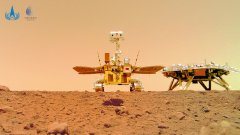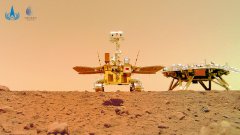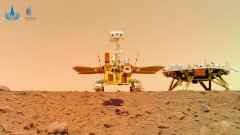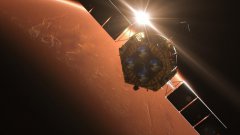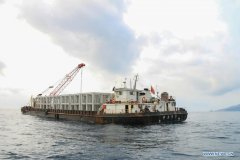Home>>
Tianwen-1 ready for Mars touchdown amid high confidence as landing window opens(Global Times) 14:30, May 14, 2021
Landing window officially opens amid high confidence for success
In the wake of China's successful launch of the Tianhe core cabin, the first section for the country's first space station, into planned orbit, stargazers from all over the world have now turned their heads once again to Mars, looking forward to the event of China's Tianwen-1 probe's upcoming landing somewhere in the southern part of a vast plain known as Utopia Planitia on the Red Planet.
Aiming to achieve Mars "orbiting, landing and roving" all in one mission, China's Tianwen-1 probe, which managed to smoothly reach Martian parking orbit in February, has now entered crucial touchdown stage as the Mars landing window - mid-May to June, per the China National Space Administration (CNSA) - officially opens.
Chinese space observers expressed high confidence over the upcoming landing of Tianwen-1, citing the repeated success of the Chang'e lunar probe missions that included a similar automatic landing stage, which provided valuable experience.
According to the China Aerospace Science and Technology Corporation (CASC), China's state-owned space giant and contractor of the country's first Mars probe Tianwen-1 mission, Tianwen-1's Mars entry, descent and landing (EDL) will take around nine minutes, during which the Chinese explorer's speed will be reduced from 4.9 kilometers per second to zero.
Although the Mars landing is well known as "seven minutes of terror," the time spent may vary due to different design, Pang Zhihao, a Beijing-based senior space expert, told the Global Times.
What's more, because the communication delay is expected to stretch to some 20 minutes, Tianwen-1's lander will carry out the mission essentially on its own.
The landing of the Chinese craft will first involve an aerodynamic decelerating stage before it deploys parachute and variant thrust engine systems.
Such an aerodynamic decelerating stage will reduce the craft's speed by some 90 percent, said Tan Zhiyun, a designer of the general probe system from the China Academy of Space Technology, a subsidiary under the CASC.
The entry and descent stages would take somewhere between 80 to 100 seconds, and the lander will then enter a hovering stage as it reaches some 100 meters above the surface, and sensors - including the onboard camera - will "search" for a safe area to eventually execute landing on the Mars surface, according to the CASC.
Named after an ancient fire god of Chinese mythology, the 1.85-meter-tall and some 240-kilogram Zhurong Mars rover will then be deployed. It is designed to rove the planet for at least 3 Martian months, approximately 92 days on Earth.
Via a Long March-5 Y4 carrier rocket, China launched the Mars probe on July 23, 2020, which was designed to complete orbiting, landing and roving in one single mission.
The rocket developer China Academy of Launch Vehicle Technology, also under the CASC, used its official WeChat public account on Friday to send its best wishes to Tianwen-1's upcoming touchdown.
The rocket stage accompanied its payload - Tianwen-1 probe - all the way to its destination, 475 million kilometers from Earth, and only bid farewell just before the probe was captured by Mars' gravitation force field.
According to the academy, after sending the Chinese craft into the Earth-Mars transfer orbit and reaching a record-breaking 11.7 kilometers per second, exceeding the second cosmic velocity, the second stage of the rocket has become an artificial planet in the solar system. "It will appear in space, 200 to 300 kilometers away from Earth, every three years."
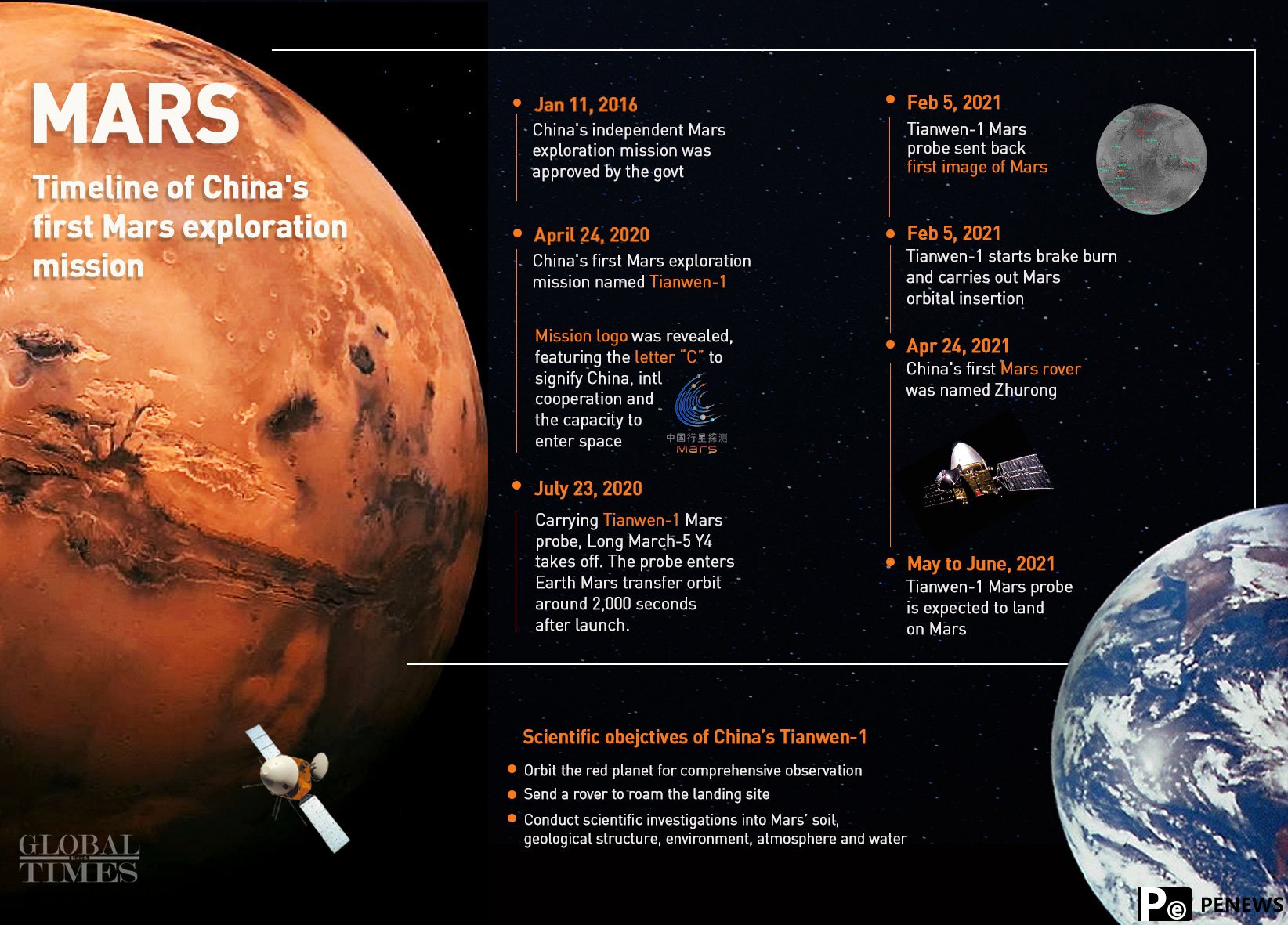
Infographic: GT
Fine landing site
Tianwen-1 is expected to land on a 3,300-kilometre-wide plain known as Utopia Planitia, the largest impact crater on Mars. Once it succeeds, China will become the third nation to safely leave its "footprint" on the Red Planet after Russia and the US.
Wang Ya'nan, chief editor of Aerospace Knowledge magazine, told the Global Times that the choice of landing site has taken into consideration both the scientific values and the safety of the spacecraft during descent.
"The landing site must be somewhere that has preserved a relatively intact geological development of the Red Planet, both on the surface and deep into the ground," Wang explained.
Previous studies suggest that the Utopia Planitia is likely to be the location of an ancient ocean of Mars, where there might be traces of biological existence, and the site where Tianwen-1 is about to land is at the junction of the ancient ocean and land, China News Service reported.
The latest scientific research found a large amount of groundwater ice under the surface of the Martian plain ranging from one to 10 meters from the ground, with the water storage equivalent to the largest freshwater lake on Earth.
